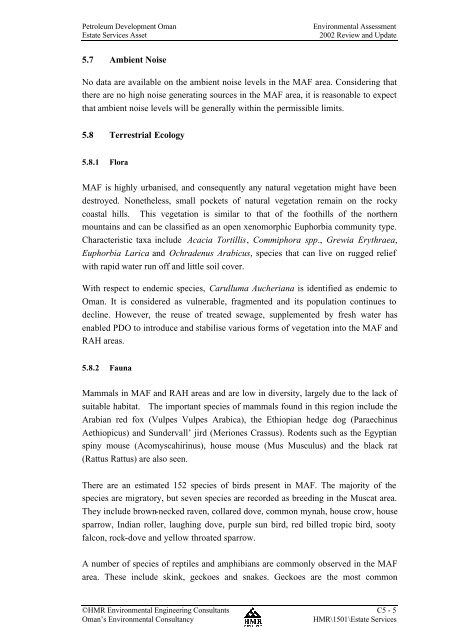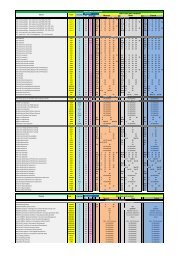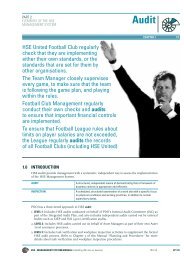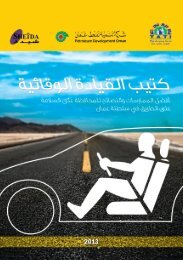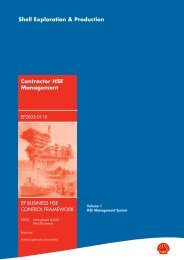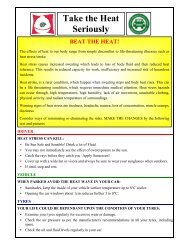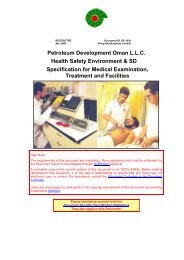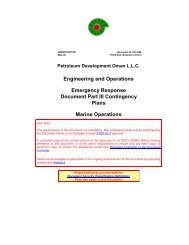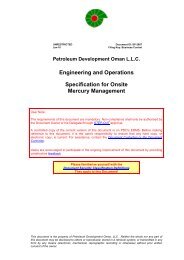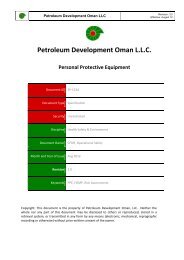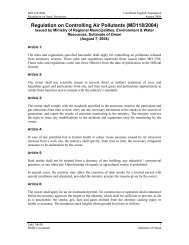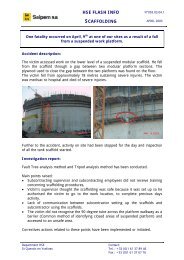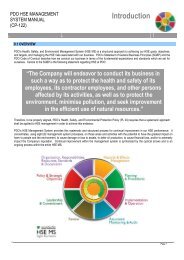Estate Service Asset - PDO
Estate Service Asset - PDO
Estate Service Asset - PDO
You also want an ePaper? Increase the reach of your titles
YUMPU automatically turns print PDFs into web optimized ePapers that Google loves.
Petroleum Development Oman<br />
<strong>Estate</strong> <strong>Service</strong>s <strong>Asset</strong><br />
Environmental Assessment<br />
2002 Review and Update<br />
5.7 Ambient Noise<br />
No data are available on the ambient noise levels in the MAF area. Considering that<br />
there are no high noise generating sources in the MAF area, it is reasonable to expect<br />
that ambient noise levels will be generally within the permissible limits.<br />
5.8 Terrestrial Ecology<br />
5.8.1 Flora<br />
MAF is highly urbanised, and consequently any natural vegetation might have been<br />
destroyed. Nonetheless, small pockets of natural vegetation remain on the rocky<br />
coastal hills. This vegetation is similar to that of the foothills of the northern<br />
mountains and can be classified as an open xenomorphic Euphorbia community type.<br />
Characteristic taxa include Acacia Tortillis, Commiphora spp., Grewia Erythraea,<br />
Euphorbia Larica and Ochradenus Arabicus, species that can live on rugged relief<br />
with rapid water run off and little soil cover.<br />
With respect to endemic species, Carulluma Aucheriana is identified as endemic to<br />
Oman. It is considered as vulnerable, fragmented and its population continues to<br />
decline. However, the reuse of treated sewage, supplemented by fresh water has<br />
enabled <strong>PDO</strong> to introduce and stabilise various forms of vegetation into the MAF and<br />
RAH areas.<br />
5.8.2 Fauna<br />
Mammals in MAF and RAH areas and are low in diversity, largely due to the lack of<br />
suitable habitat. The important species of mammals found in this region include the<br />
Arabian red fox (Vulpes Vulpes Arabica), the Ethiopian hedge dog (Paraechinus<br />
Aethiopicus) and Sundervall’ jird (Meriones Crassus). Rodents such as the Egyptian<br />
spiny mouse (Acomyscahirinus), house mouse (Mus Musculus) and the black rat<br />
(Rattus Rattus) are also seen.<br />
There are an estimated 152 species of birds present in MAF. The majority of the<br />
species are migratory, but seven species are recorded as breeding in the Muscat area.<br />
They include brown-necked raven, collared dove, common mynah, house crow, house<br />
sparrow, Indian roller, laughing dove, purple sun bird, red billed tropic bird, sooty<br />
falcon, rock-dove and yellow throated sparrow.<br />
A number of species of reptiles and amphibians are commonly observed in the MAF<br />
area. These include skink, geckoes and snakes. Geckoes are the most common<br />
©HMR Environmental Engineering Consultants C5 - 5<br />
Oman’s Environmental Consultancy<br />
HMR\1501\<strong>Estate</strong> <strong>Service</strong>s


